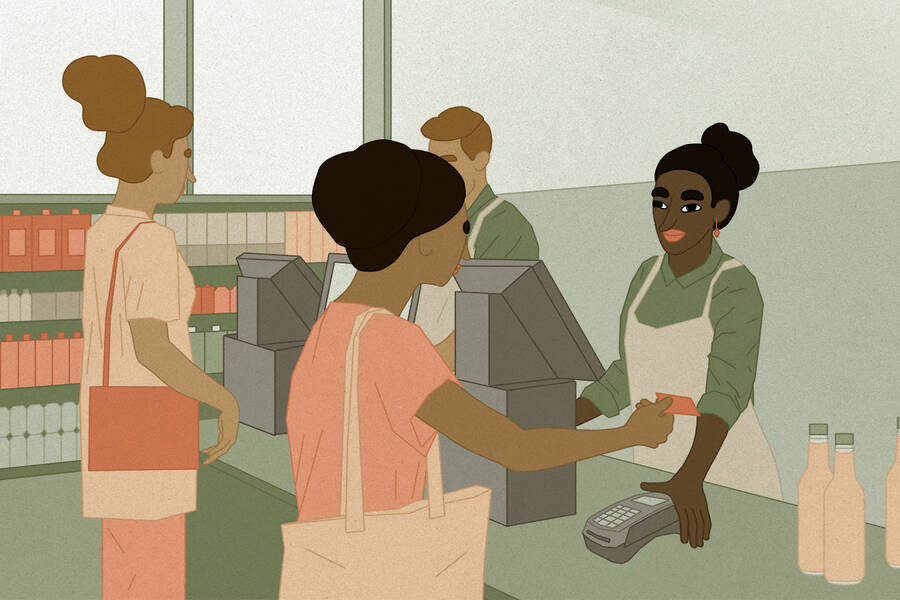Finance & Accounting Policy Nov 1, 2023
When Your Savings Account Is Also a Lottery Ticket
Prize-linked savings accounts can be more enticing to customers than interest rates—and banks like them, too.

Yevgenia Nayberg
Financial inclusion remains a pernicious problem around the world.
Today, only about half of adults in developing countries could quickly access funds to cover an unexpected expense, and 1.4 billion are entirely unbanked—meaning they have no accounts at any financial institution.
This disconnection from the financial system has many origins, explains Sean Higgins, an assistant professor of finance at Kellogg, and it’s important to remedy. “Worldwide, you have households that aren’t able to save as much as they want to,” he says. “Sometimes it’s due to lack of trust in banks or having to travel long distances to access them. But if you’re just saving money under your mattress, you’ll be more likely to spend it than if you had it in an account.”
Savings deposits are critical not just for individuals but for banks. “About three-quarters of bank lending worldwide is financed by deposits—whether lending to households, small businesses, large businesses,” Higgins explains. “But especially in developing countries, banks struggle to attract deposits. A lot of people never open accounts, and those that do often don’t deposit significant amounts because they don’t have much income.”
So how can you encourage people to stash away more money—or even open a savings account in the first place?
One promising vehicle is what’s known as a prize-linked savings (PLS) account, a type of financial product offered by banks and credit unions worldwide. For every, say, $5 an account holder saves in a month, they receive a ticket for a cash-prize drawing—with lots of small prizes of $50 and a couple of larger prizes of $1,000. To encourage both saving more and opening savings accounts, new and existing account holders are typically eligible for PLS incentives.
But it’s been hard to say how well such products work. “There isn’t a lot of research on prize-linked savings with these lottery-type incentives,” Higgins says.
To fill that gap, Higgins—along with Paul Gertler of the University of California, Berkeley, Aisling Scott of Indeed, and Enrique Seira of Michigan State University—worked with a Mexico-based bank to examine the impact of offering PLS accounts. They found that these cash incentives increased the numbers of new accounts and deposits, as well as the savings stock (that is, the total amount of money saved at each branch).
A randomized study
To study the impact of PLS accounts, the researchers partnered with a Mexican bank that agreed to offer the incentives in certain branches countrywide for a two-month period in 2010.
The researchers randomly assigned 40 of the 110 bank branches in the study to begin offering PLS accounts to customers; the remainder of the branches served as a control group. Account holders—new and existing—earned one lottery ticket for each 50 pesos (US$4) of new savings. At the end of each month, the bank awarded 1,000 prizes of 400 pesos (US$31) and two prizes of 10,000 pesos (US$777).
“[E]specially in developing countries, banks struggle to attract deposits. A lot of people never open accounts, and those that do often don’t deposit significant amounts because they don’t have much income.”
—
Sean Higgins
The researchers measured the numbers of new accounts opened and deposits made at each branch during the study period, along with the stock of savings at each branch. “The stock of savings is what matters for the bank, because it makes money by lending out people’s deposits and getting a return on those,” Higgins explains. A higher stock of savings would also mean individual account holders were saving more at the branch.
The researchers were careful to design the study to test how PLS accounts affect both individuals and banks. “Most studies on savings interventions randomize at the individual [account-holder] level,” Higgins says. “It was important to do it at the branch level because it helped us understand how profitable it was for branches to offer this.” After all, it’s much easier to convince banks to offer a product that will benefit customers if they’ll benefit too.
A high-impact offering
The results make clear that PLS vehicles can help both account holders and banks.
The researchers found that, compared with control branches, branches offering the incentives had a 36 percent increase in the number of accounts opened and a 21 percent increase in the number of deposits during the months the lottery incentive was active. Nearly all (96 percent) newly opened accounts belonged to households that had never had a bank account. Moreover, the effects persisted after the PLS programs ended; in the following years, the stock of savings grew steadily larger at treatment branches compared with control branches.
Importantly, Higgins and his colleagues also showed that PLS programs are significantly better at encouraging customers to open accounts and save than incentives examined in previous studies, such as guaranteed interest rates. Why? “One mechanism could be that people tend to overweigh small probabilities,” he says—that is, people think they’re more likely to win the big prizes than they really are.
But there could also be a practical component to the efficacy of PLS incentives: “Winning that bigger money might enable someone to purchase an asset that could help them economically, like buying a motorcycle to help with your delivery business instead of using a bike or walking.”
Meanwhile, the savings effect might persist after the incentive ends because people have developed a habit of saving. The PLS motivates people “not only to open the account but to start saving right away, and then they see that’s a valuable thing to do,” Higgins says.
A legal quagmire
Do the findings mean more banks worldwide should offer lottery-type incentives?
Maybe, Higgins suggests. But it’s not as simple as just rolling them out.
Some regions have created regulatory hurdles to PLS accounts. In the U.S., it was illegal to offer such products until 2014, when Congress passed new legislation permitting them. “But many states still had laws against them after that,” Higgins says. Today 32 U.S. states allow PLS; in some of them, only credit unions, rather than banks, are allowed to offer these incentives.
“I think the reason you don’t see bigger national banks offering this product is that it’s just not worth entering that legal quagmire and creating something they can have only in some states,” Higgins says. “Our legal framework just makes them less popular than they might be.”
Still, a growing number of local banks and fintech businesses offer PLS in the U.S., and many more financial institutions rely on them worldwide—in over 40 countries, according to the researchers.
With good reason. “Unlike a traditional lottery, where you’re likely to lose money, you get to keep the principal in your PLS account no matter what,” Higgins says. That’s a bet worth making.
Sachin Waikar is a freelance writer based in Evanston, Illinois.
Gertler, Paul, Sean Higgins, Aisling Scott, and Enrique Seira. 2023. “Using Lotteries to Attract Deposits.” Working paper.



